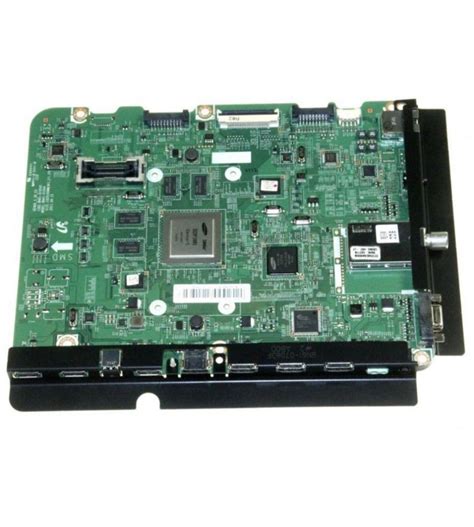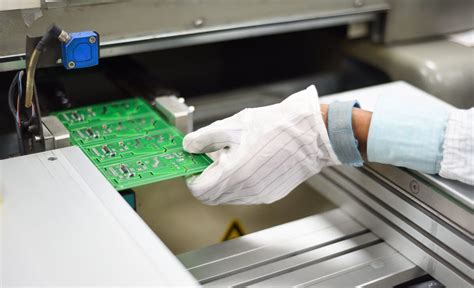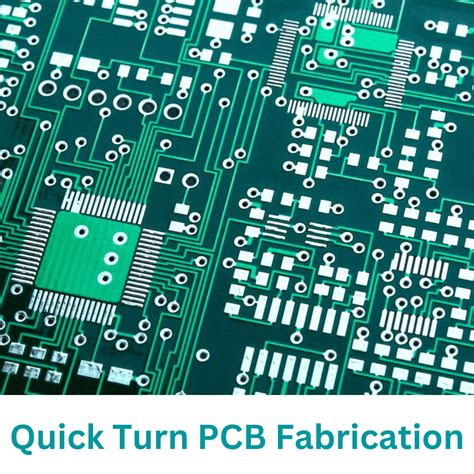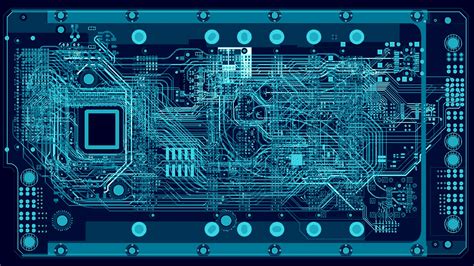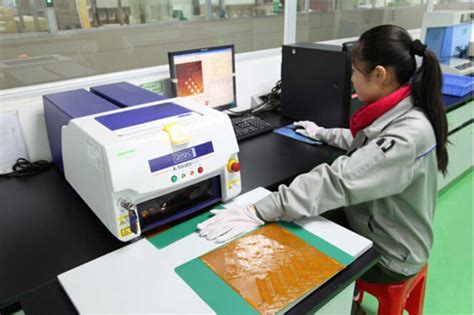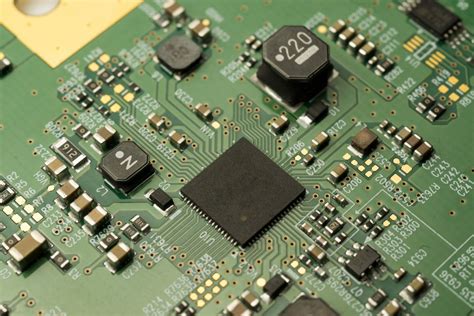Revolutionizing Technology: The Evolution and Impact of PCB Assembly
Key Takeaways
The evolution of PCB assembly has been a cornerstone in advancing modern technology across various industries. From its nascent stages, where bulky components were manually soldered, to today’s automated processes that utilize precision machinery and cutting-edge materials, PCB assembly has consistently driven enhanced performance and efficiency. These advancements have made PCBA an integral part of both high-tech consumer electronics and mission-critical automotive systems. Industries have benefited from more reliable communications infrastructure due to the innovations in PCBA, ensuring seamless connectivity in an increasingly digital world. The continuous improvements in this field are not only making devices smaller and more powerful but also more reliable, which is pivotal for the future of technology. By examining the historical progression and current state of PCB assembly, we gain a comprehensive understanding of its profound impact on technological advancements and industrial applications.
Introduction to PCB Assembly: Origins and Early Innovations
The journey of PCB Assembly (PCBA) dates back to the mid-20th century when electronic devices began to shrink in size and grow in complexity. The initial concept aimed to resolve the cumbersome and unreliable nature of point-to-point construction, which was labor-intensive and prone to human error. The invention of the printed circuit board (PCB) changed this landscape dramatically. Early innovations included simple single-sided boards where a thin layer of conductive material was etched into a non-conductive substrate, creating a pathway for electrical currents.
The transformation from using vacuum tubes and bulky components to compact, efficient transistors marked a significant leap in the technology. As industries demanded more efficient methods, double-sided PCBs with through-hole technology emerged, enabling more complex circuits within smaller footprints. This step significantly improved the design flexibility and reliability of PCB assembly processes.
One crucial early innovation was the development of photoengraving techniques for PCB manufacturing. This process allowed for precise etching of intricate circuits onto the substrates, which paved the way for more compact and complex designs that we see today.
“Innovation in PCB assembly during its early years set a strong foundation for modern electronics, making it possible to produce smaller, faster, and more reliable devices.”
The continual improvements during these formative years established PCB assembly as a cornerstone in electronics manufacturing, supporting everything from household gadgets to sophisticated computing systems.
Technological Advancements in PCB Assembly
Over the decades, PCB assembly has witnessed remarkable transformations driven by advances in technology. The integration of surface-mount technology (SMT) has been a pivotal innovation, allowing for more compact and higher-density circuitry, which in turn has enabled the miniaturization of modern electronics. PCBA techniques have evolved with the development of more sophisticated soldering processes, such as reflow and wave soldering, which enhance the reliability and accuracy of component placement. Moreover, automated optical inspection (AOI) systems have become an integral part of PCB assembly, facilitating the rapid detection and correction of defects during the manufacturing process.
Materials science has also played a significant role in transforming PCB assembly. The advent of lead-free soldering materials and high-temperature laminates has improved both the environmental impact and performance capabilities of PCBs. Advances in design software have enabled more complex circuit layouts and simulations, reducing the time from concept to production while ensuring high quality.
In addition to these technological strides, there has been a growing emphasis on enhancing thermal management within PCBs. Innovations such as thermal vias and heat sinks are increasingly employed to manage heat dissipation effectively, ensuring that modern electronic devices operate efficiently under various conditions.
The convergence of these technological advancements underscores the critical importance of PCBA in today’s fast-paced electronic environment. By pushing the boundaries of what is possible with circuit design and manufacturing, modern pcb assembly technologies continue to drive performance improvements across a multitude of applications, from consumer gadgets to advanced automotive systems. These progressions not only enhance device efficiency but also contribute significantly to extending their operational lifespans, marking an era where reliability is paramount.
In summary, technological advancements in PCB assembly have not only revolutionized how circuits are created but have also set new benchmarks for performance and reliability across numerous industries.
Enhanced Performance and Efficiency in Modern Electronics
The continuous advancements in PCB assembly have markedly augmented both the performance and efficiency of contemporary electronic devices. Today’s PCBA processes integrate cutting-edge techniques and materials, resulting in remarkable reductions in power consumption and enhancements in signal integrity. By leveraging high-density interconnects (HDI) and advanced surface mount technology (SMT), modern PCB assemblies enable the production of compact, lightweight devices without compromising functionality or reliability. These innovations facilitate increased processing speeds, lower latency, and improved thermal management. Moreover, the automation of PCBA processes ensures consistent quality and precision, significantly minimizing the risk of defects. As a result, consumer electronics, automotive systems, and telecommunications equipment have benefited immensely from these advancements, showcasing how pivotal PCB assembly is to driving technological progress across various sectors.
The Role of PCB Assembly in Consumer Electronics
PCB assembly has become a cornerstone of the consumer electronics industry, driving the development and proliferation of a wide range of innovative devices. From smartphones and tablets to smartwatches and home automation systems, the efficiency and precision of modern PCBA processes have enabled manufacturers to deliver increasingly compact, reliable, and powerful electronic products. The advancements in surface-mount technology (SMT), automated assembly lines, and rigorous quality control measures have significantly reduced production costs while boosting device performance. As a result, consumers enjoy electronics that are not only more affordable but also packed with advanced features and functionalities. Consequently, the ongoing evolution in PCB assembly continues to shape the landscape of consumer electronics, setting new benchmarks for innovation and user experience.
PCB Assembly’s Impact on the Automotive Industry
The integration of PCB assembly (PCBA) into the automotive industry has been nothing short of transformative. Modern vehicles rely heavily on sophisticated electronic systems, and PCBA has enabled the development of advanced features such as automated driving assistance systems, enhanced infotainment units, and improved safety measures. The precision and reliability of PCB assembly processes ensure that these complex systems perform efficiently under varying conditions. Furthermore, the miniaturization capabilities afforded by innovative PCBA technologies allow for more compact and lightweight designs, which are critical in achieving better fuel efficiency and meeting stringent environmental regulations. As a result, manufacturers can now incorporate more electronic components within confined spaces without compromising on performance or reliability. Overall, PCB assembly has proven to be a crucial element in pushing the boundaries of what is possible in automotive technology, paving the way for the next generation of smart vehicles.
Transforming Telecommunications Through Advanced PCB Assembly
The telecommunications industry has undergone a seismic shift with the integration of advanced PCB assembly (PCBA) technologies. The meticulous process of assembling printed circuit boards is at the heart of communication devices, from smartphones to satellites. The transition from simple PCB layouts to complex, multilayered boards has been instrumental in facilitating faster data transmission and improved connectivity.
In this digital era, telecommunication systems require components that can handle high-frequency signals with minimal interference. Modern PCBA techniques have been pivotal in meeting these demands. For instance, the use of high-speed laminates and fine-line etching in PCB assembly allows for denser circuitry and higher component counts per unit area. This not only translates to miniaturization but also ensures that devices are lighter and more power-efficient—two critical factors in today’s mobile-reliant society.
Furthermore, advancements in surface-mount technology (SMT) have streamlined the PCBA process, allowing for automated, precise placement of components. This has led to a significant reduction in errors and an increase in production speed and consistency. As a result, the telecommunication industry has been able to grow exponentially, managing increasing volumes of data traffic with elevated reliability.
The integrity and performance of telecommunication systems often hinge on thermal management capabilities within PCB assemblies. With power densities on the rise, effective heat dissipation is imperative for maintaining system stability and longevity. Advanced PCBA incorporates materials and techniques designed for enhanced thermal conductivity which aids in dissipating heat more efficiently.
Without a doubt, the current state-of-the-art PCB assembly technologies have become an unseen backbone supporting an industry that connects people across the globe instantaneously. The evolution from rudimentary assemblies to today’s high-tech configurations reflects an unwavering commitment to innovation—pushing the boundaries of what’s possible within telecommunication networks and beyond.
Future Trends and Innovations in PCB Assembly
As technology continues to advance at an unprecedented pace, the field of PCB assembly is poised for significant transformations. One of the primary trends shaping the future is the adoption of Industry 4.0 principles, which integrate automation and data exchange in manufacturing technologies. This includes the incorporation of AI and machine learning to enhance the precision and efficiency of PCBA processes. Furthermore, advancements in materials science are leading to the development of more durable and flexible substrates, enabling PCB assemblies to perform well under extreme conditions and in a variety of applications.
Another crucial innovation on the horizon is the integration of 3D printing technology into PCB production. This method allows for more complex designs that were previously unattainable with traditional manufacturing techniques, thereby pushing the boundaries of what’s possible in electronic device miniaturization. Additionally, with growing concerns over environmental sustainability, there is a noticeable shift towards greener manufacturing processes. The industry is increasingly adopting eco-friendly practices such as using lead-free soldering materials and reducing waste through more efficient production methods.
The rise of Internet of Things (IoT) technology is another driver propelling forward-thinking developments in PCBA. IoT devices often require compact and highly reliable PCBs to function effectively in interconnected ecosystems, demanding innovative approaches to heat management and power efficiency.
In conclusion, the future landscape of PCB assembly will be characterized by smart manufacturing systems, innovative material technologies, eco-conscious production methods, and significant advances spurred by emerging IoT applications. These trends will not only enhance device performance but also pave the way for unprecedented possibilities in electronics design and functionality.
Conclusion
As we reach the culmination of this exploration, it is clear that PCB assembly (PCBA) stands as a cornerstone in the edifice of modern technology. From its nascent roots, ingeniously threading together rudimentary components, to the complex and highly sophisticated systems of today, PCBA has undergone a remarkable evolution. This journey has been marked by continuous innovation, driving forward leaps in performance and efficiency that have echoed through a multitude of industries.
The influence of PCB assembly on consumer electronics is undeniable. It has enabled devices to become more powerful, yet shrink in size—allowing for portability and convenience that were once thought impossible. In the automotive realm, advancements in PCBA have led to enhancements in vehicle safety, navigation systems, and performance monitoring. Furthermore, telecommunications owe much of their rapid growth and reliability to the intricate webs of PCBs that form their very backbone.
Looking ahead, what is on the horizon for PCBA is not just an extension of its current trajectory but a foray into uncharted territories bolstered by burgeoning technologies such as flexible circuits and AI-driven design. These future trends and innovations promise to usher in yet another paradigm shift where limits are redefined and possibilities are expanded.
In essence, PCB assembly’s role can be summarized as pivotal; it’s a dynamic process that has not only underpinned past technological triumphs but also set the stage for future marvels. Its impact on day-to-day life—as well as on industries that propel civilization forward—affirms its status as one of the most transformative technological advancements of our time.
FAQs
PCB assembly (PCBA) can often raise numerous questions, particularly for those unfamiliar with its complexities and nuances. To aid in understanding, we’ve compiled a list of frequently asked questions:
What is PCB Assembly (PCBA)?
PCB assembly, also known as PCBA, refers to the process of soldering or assembly of electronic components to a printed circuit board. This process is essential for creating functional electronic devices.
How has PCB Assembly evolved over the years?
The evolution of PCB assembly has been marked by significant technological advancements. From its early days of manual soldering to the current automated processes, these innovations have substantially increased the efficiency, performance, and reliability of electronic devices.
Why is PCB Assembly important in modern electronics?
The importance of pcb assembly in modern electronics cannot be overstated. It is crucial for the manufacturing of a wide range of products, including consumer electronics, automotive systems, and telecommunications equipment. The advancements in pcba technology ensure that these products are more reliable and perform better.
What are common materials used in PCB Assembly?
Common materials used in pcb assembly include fiberglass for the board base, copper for conductivity, and various resins. The choice of materials can affect the performance and durability of the finished product.
Can PCBA impact device performance?
Absolutely! The methods and materials utilized in PCB assembly significantly influence the performance and efficiency of electronic devices. Enhanced soldering techniques and superior materials contribute to better connectivity and reliability.
For further details about how advanced PCB Assembly is shaping industries, please click here to learn more.

